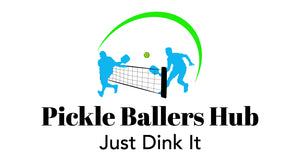What type of Pickleball Paddles are there?
If you think all pickleballs are made the same, think again. Many players underestimate the impact of their paddle, assuming all paddles are the same, but the reality is that every detail tha goes into engineering these paddles is important.Your paddle could be the key to changing your game, so it's important you pick the right one. Your paddle is part of you, gives you control, spin, power and precision, and depending on what kind of player you are you might prefer a standard paddle, a square paddle, or another shape designed for your strategy.
The right paddle can turn your average rally into a winning play and choosing the wrong one can throw off everything from your serve to your dink. Which is why understanding the differences between paddle types is so important when picking the right one for you. If you're ready to shop, feel free to explore our selection of Pickleball Paddles.
What's on the inside Matters- Pickleball Paddle materials
Understanding the core is the first step to mastering your paddle. The core material of your Pickleball paddle plays a big role in how it feels and performs and knowing what's inside your paddle will help you decide whether you need more power, more control, or a balance of both. The three most common core materials are carbon fiber, poly, or hybrid.
Polymer by far is the most popular option… and for good reasons. It gives players a soft consistent feel, giving a quieter “pop” which is a plus for a lot of pickleball players. This material is a reliable choice with its special ability to absorb impact.
Carbon fiber cores have quickly gained attraction and been recognized as a game changer. One of the key components to the carbon fiber core is its ability to redirect energy. This allows players to put more spin and placement on the ball. With its lightweight design and strength it's able to pack a punch without weighing you down. On top of this Durability is another component in Carbon Fiber Cores which makes it a go to for players who are constantly on the court.
A Hybrid Core is a combination of materials, mixing and matching the best ones to get a blend that's tailored to you. This is where we see that blend of power and control all in one paddle. When a paddle with a hybrid core is in your bag, you know you're ready for any style of play.
The various Pickleball Paddle Face Materials
Just as important as the core, the paddle face material is a big factor in how the paddle performs, It directly affects how the ball reacts on contact. Spin, power, friction… it all comes from the surface. Face material can make the difference between a controlled dink and a hard miss. Paddles with softer faces, like composite, will absorb more energy, which helps with touch shots, such as dinks and drops. A stiffer face, like graphite or carbon fiber, redirects energy faster, enabling a quicker response.
Your performance is also affected by the surface texture of your pickleball paddle. A rougher surface material will grip the ball, making spinning easier. While a smoother surface offers faster contact.
The shape of your pickleball paddle is more than just design, it's a throughout strategy. Shape determines your reach, size of your sweet spot, and feel in your hand. A traditional standard paddle is the most common shape and is a great option for beginners. It has a generous sweet spot and feels comfortable and balanced in your hand.
Another option is an elongated paddle, most known for its extra length, helpful for that reach you might be missing. An elongated paddle is any paddle with a length longer than 16.5”. Most common for players that have to cover a lot of court.
On the other side, the sweet spot is smaller but the extra space on the paddle creates more whip, which can add power to your drives. A square shaped paddle, is a newer design, favored by players who play close to the net. The shape maximises surface area to create a wider hitting zone.
Widebody paddles are wider than standard paddles, creating a larger sweet spot that reduces mishits.
Pickleball Paddle Core Thickness- Subtle Change, Big Difference
Don't overlook core thickness, although it may seem like a subtle change, it most certainly will affect your whole game. The thickness of the core measured in millimeters, can range from 14mm to 16mm. The difference is that a thicker paddle core generally provides more power and stability. The excess material absorbs the ball's impact allowing that powerful shot that you love with half the effort. Thicker Pickleball paddles cores often offer more forgiveness, making them more appealing to intermediate players.
In contrast thinner Pickleball paddle cores excel at control and touch, making precise dinks come at an ease. More advanced players often choose a thinner core because they give more control, and when paired with consistent technique, it's a game changer. Understating the difference between core thickness can help you choose a paddle that compliments your style.
If you're confused about grip circumference, don't be alarmed, many players feel the same way. While it might seem minor, the right grip size is crucial for comfort and control. Every player's hand size is different, so it would only make sense for grip size to fit you. Larger grips (4 ½–4 ¾ inches) offer more stability and support, while smaller grips (around 4–4 1/8 inches) allow for more wrist action. It's all about knowing yourself and fishing the balance.


